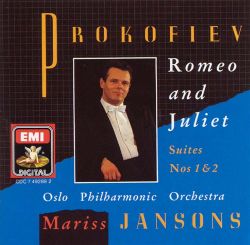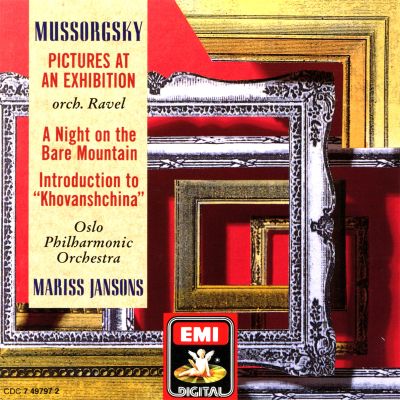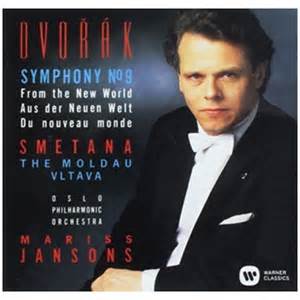Warner Classics release of all twenty one EMI Jansons/Oslo recordings plus five DVDs of selected NRK TV broadcast concerts
In the first installment of this blog post, I discussed how Warner Classics put together the package under discussion, and my reaction to it, as well as my assessment of the first three recordings in the series. Before I continue with the next three isues, I’d like to amplify, if I may, my comments about the sound quality of the set, as well as the issues we were dealing with when we recorded this music in the late ’80s to mid to late ’90s.
I had commented that when I first heard the recordings upon release, I was not that pleased with the results, I also stated that as time passed, and I gave these recordings another listen years later, that I noticed more detail than I had remembered from the previous listening sessions. That I had gained perspective is true, but to be honest, I still had niggling concerns about the sound quality.
Thinking about it further, this is not the fault of the engineers, or Jansons, or the orchestra. All of the aforementioned operated with the highest degree of professionalism. I lay blame primarily on the inadequate acoustics of the Oslo Konserthus. The hall is so oddly shaped, that it results in a lack of bass response. The higher end and the mid-range are favored to the expense of the lower end of the sound spectrum. One must bear this in mind as one reads further into this blog post and future ones dealing with the subject.
The results in some cases rob the performances of the last ounce of immediacy which distinguishes a great recording from a merely good one. This was reflected in the initial reviews of several of the performances in the series, and in no way reflects the way we performed in concert. The concerts with Jansons were all high-energy and “pedal-to-the-metal” intense. One had to be present to feel these qualities. Which is why Jansons switched over to live recordings after the EMI contract ended, and after I left the orchestra. Listening to some of the Simax recordings made after my departure, I noticed the a big improvement in the “immediacy” and intensity of the recordings. In a way, I wished I had stayed about three more seasons. So – with those thoughts set down, let’s continue my assessment, shall we?
Prokofiev: Romeo and Juliet – Suites One and Two

Of all the recordings that we made for EMI, this was the one that I had my doubts about most, at least initially. I felt that though the performance was fine, we sounded a little too edgy. Too much high-end. The passage of time and further rehearing of the recording has changed some of my perceptions. While I still feel that there the lower and mid-range frequencies could have been brought out a bit better, the performance’s drive and intensity were still present, and I began to enjoy the performance for its musical value. Incidentally, this was the first recording with John Frazier, who would produce all of the rest (except one) of our EMI recordings. David Murray produced our first three recordings and would be back for the Sibelius First Symphony later on. Mike Clements continued in his role as sound engineer. My personal favorites from the suites are the Death of Tybalt and Madrigal from the First Suite; Montagues and Capulets and Romeo at Juliet’s Tomb, both from the Second Suite.
To go back to my complaints regarding the sound quality, I note that there must have been some re-mastering as the quality has improved, particularly in the middle range. It is more balanced. The upper frequencies do not jump out as egregiously as they once did. As a matter of fact, I am listening to this particular performance as I write this blog, and am enjoying it. I guess Mr. Hinger’s advice on waiting twenty years to listen to one’s recordings holds true even now.

Mussorgsky: Pictures at an Exhibition – Night on the Bare Mountain – Introduction to “Khovanshchina”
This is the fourth recording in the series, and if memory serves me correctly, we recorded these works in August of 1988, just a couple of months before our first tour to Japan. That tour took place in November.
John Fraser was again the producer, and Mike Clements was still our sound engineer. With regard to the sound, John Fraser was getting the measure of the orchestra and our problematic hall. The sound has more presence and and the detail is better than on previous recordings.
My favorite recording from this disc is A Night on the Bare Mountain. I felt that this came off best as it had the required “creepiness” and Jansons exercised the right amount of control and frenzy when the occasion called for it. The Introduction to Act I of “Khovanshchina“, (also known as Dawn on the Moscow River“) is also excellent, full of atmosphere. As for Pictures at an Exhibition, it would have been my favorite as I love the piece and the recording is quite good. There is a moment in “Bydlo” where I wished I had used another 25 inch timpano for the e-flat, as the 23 inch timpano was too shallow and the pitch was muddled. Other than that, things went well, especially with the last two movements, The Hut of the Baba-Yaga and The Great Gate of Kiev. These came off splendidly. I just wish Mariss would have taken just a bit more time with the “Gate” – this would added a bit more majesty to the movement. All in all, a good effort.

Dvorak: Symphony No.9 in E minor “From the New World – Smetana: The Moldau (Vltava)
This was our sixth recording in the series, and John Fraser and Mike Clements had indeed taken our full measure and this recording has taken its place as one of my favorites. Recorded in November of 1988 just before leaving for Japan, the orchestra was at the top of its game, and Jansons was a great conductor of Dvorak’s music. He knew just how to get the last ounce of intensity out of the music as well as how to hold back and when to let it breath. I was a little apprehensive before recording as I had just put a tiny hole in the calf head on the 25 inch Hinger timpani. As there was literally no time top change heads before the recording, I made a “Hail Mary” play – I applied a small piece of teflon to the affected area, and the Good Lord must have been smiling on me that day, as it worked quite well. Today, I still enjoy the opening of the first movement, which came off better than I hoped – the Largo is particularly beautiful, and the scherzo is full of energy and contrast. The finale is….well, the finale. It is fun to play, to listen to, and it still comes off that way after so many years. Bedrich Smetana’s Moldau (Vltava) gets a very well-groomed performance. It was fun to record, and it is fun to listen too. My assessment is that this one of the best discs in the set.
Stay tuned for the next installment!

Recent Comments